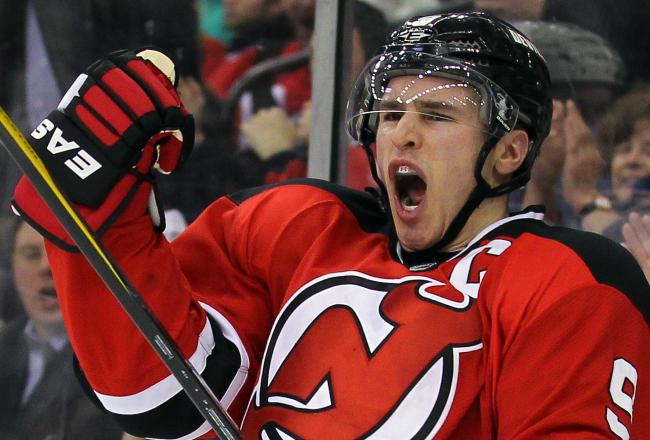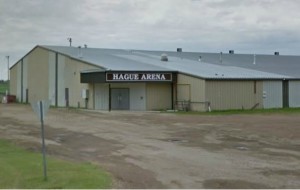Just days after news broke of a massive breakdown in labor negotiations between the NHL and NHLPA, players, owners and fans alike are wondering what went wrong and how the season can still be salvaged – even after the owners reportedly took every existing offer off the table.
Despite the bleak outlook, perhaps now is the time to be most optimistic about a deal.
Both sides are frustrated with the outcome of the latest round of talks, but one resounding thought continues to emanate in the wake of the breakdown: Both sides are too close to quit now.
“(The offer is) off the table until they talk to us next,” said Detroit Red Wings defenseman Ian White, who has been very outspoken throughout the lockout. “We’re obviously not going to start from scratch and do this process all over”
Tentative agreements had reportedly been reached regarding the “make whole” provision, in which the owners made a huge stride and agreed to cover the existing contracts with a $300 million offer. Other major financial issues had also been hammered out as well.
The sticking points remained the length of the next CBA and term limits on free agent contracts – two key issues in negotiations, with the owners supposedly stating that term limits on contracts is the hill that they will die on.
The financial issues seemed to be the biggest hurdle for both sides to climb, so with an agreement in place for a “make whole” provision, who will blink first on the other issues?
If an agreement is to happen soon, it needs to be the players.
Yes, the players have made significant concessions throughout negotiations. The owners have also moved toward the middle on major issues, most notably by upping their “make whole” offer to $300 million from a little over $200 previously.
The owners want to limit the length of free agent contracts to five years with the option of longer deals if free agents choose to re-sign with their existing club. According to TSN’s Bob McKenzie via CapGeek, of the 700 or so NHL players, 89 of them are currently on contracts longer than five years. And of those 89, about half are players who re-signed with their current club, leaving roughly 40 players who this contract length stipulation would affect.
To put it plainly, the NHLPA is now fighting a battle against the owners for something that would apply to roughly 5 percent of the entire population of the league.
This issue does have wider-spread implications, however. Take, for example, Zach Parise’s 13-year, $98 million contract that he signed this past summer. In the old CBA, Parise’s cap hit was a little more than $7.5 million a season, despite the fact that he would actually make $12 million in the first two years of the contract, $11 million in the third, and $9 million in years four and five.
Under the new system proposed by the owners, Parise’s cap hit would be $10.6 million – nearly a $3 million increase in cap hit over the old CBA. And who does that increased cap hit affect? All of the other “non-superstar” players on the team who will need to take pay cuts in order for the team to sign Parise.
Will that actually happen? Maybe. The essential premise behind a five-year limit on contracts is that it would proportionately impact players of all salary levels. If the new CBA had been in place last summer, a team like the Wild may not have had the funds to sign Parise, or certainly to sign both Parise and Ryan Suter like they did. Instead, teams would have less funds to offer a player like Parise, and the trickle down effect would impact all of the other players on the team until new salary structures are in place.
And that would be part of the key from a management perspective – implementing a fiscally responsible salary structure would become a vital component of success. The Detroit Red Wings were masters of this under the terms of the old CBA. They had a salary structure that everyone bought into. Maybe players could have made more money elsewhere, but the Red Wings were continually competitive and always provided their players with the chance to win.
But, like teams did under the last CBA, you will still probably see teams open the check books and pay players more than they are worth. At the same time, players who agree to those inflated terms will likely be put in a situation where their team can’t sustain a competitive nature year after year because they don’t have the funds to pick up the other pieces of the puzzle.
In the end, a term limit on contracts only impacts a few high-profile players in the league. If this is the one point that the owners absolutely refuse to budge on, perhaps the players need to look at the numbers and understand that 650-odd players are not currently playing hockey because of one sticking point that really only impacts 5 percent of all of the players in the league.
Will the players give? At this point, we will likely see cooler heads prevail sooner rather than later and negotiations will continue. There will probably be a concession on each end – the players will agree to term limits, probably five or six years maximum, while the owners will come off their desire for a 10-year term on the next CBA and agree to something in the seven or eight year range.
It seems so easy to simply meet in the middle on these terms and get the season started, but this final hurdle could be the hardest to overcome. Still, with the key financials worked out and agreed to before the owners supposedly took their offers off the table, contract term limits and the length of the next CBA are the sticking points keeping the NHL and NHLPA at odds. There is definitely a lot of frustration on both sides as they appeared so close to a deal earlier this week before talks broke down, but perhaps this frustration shows how badly both sides want to make a deal happen and get back to doing what they do best – playing hockey. Things definitely seem bleak now, but perhaps this is the time to be most optimistic.


